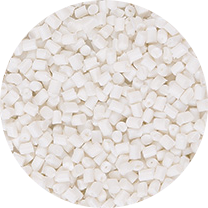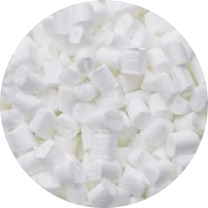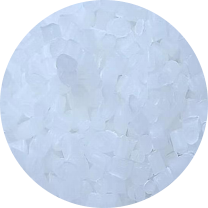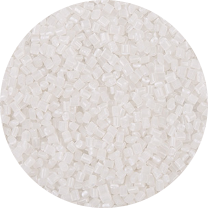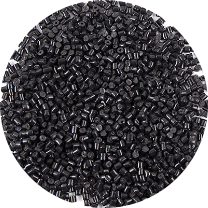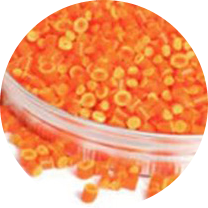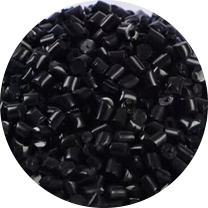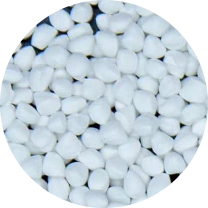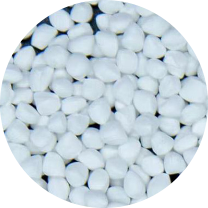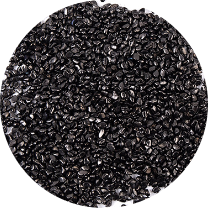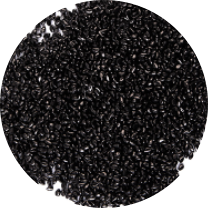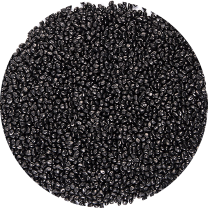Beyond Masks: The Innovative Applications of Meltblown Masterbatch
- 1 Understanding Meltblown Masterbatch Technology
- 2 Advanced Air Filtration Solutions
- 3 Liquid Filtration Innovations
- 4 Oil Absorption and Environmental Remediation
- 5
- 6 Specialized Industrial Applications
- 7 Future Trends and Innovations
- 8 FAQ
- 8.1 What is the difference between meltblown and spunbond nonwovens?
- 8.2 How does meltblown masterbatch improve filtration efficiency?
- 8.3 Can meltblown polypropylene be recycled effectively?
- 8.4 What factors affect the shelf life of meltblown filtration media?
- 8.5 How is meltblown technology adapting to sustainability requirements?
While meltblown masterbatch gained global recognition during the pandemic for its critical role in face mask filtration, its applications extend far beyond personal protective equipment. This specialized polymer additive serves as the engineering heart of nonwoven fabrics, enabling advanced performance characteristics across numerous industrial sectors. The meltblown masterbatch market continues to evolve with innovations targeting filtration efficiency, sustainability, and specialized functionality.
Understanding Meltblown Masterbatch Technology
Meltblown masterbatch is a concentrated mixture of pigments, additives, and carrier resins specifically formulated for the meltblown nonwoven manufacturing process. This technology creates ultra-fine fiber structures with exceptional properties that make them ideal for sophisticated filtration and absorption applications.
- Core composition: Typically based on polypropylene with specialized additives
- Manufacturing process Extruded through micro-dies to create microfibers
- Key characteristics: High surface area, fine porosity, and excellent uniformity
- Functional advantages: Enhanced filtration, absorption, and barrier properties
Advanced Air Filtration Solutions
The air filtration sector represents one of the most significant growth areas for meltblown nonwoven materials. Beyond standard HVAC applications, these advanced materials are now engineered for increasingly specialized environments requiring precise particulate capture.
- HEPA and ULPA filtration: Achieving 99.97% efficiency on particles down to 0.3 microns
- Automotive cabin air filters: Protecting against pollutants, allergens, and exhaust particulates
- Cleanroom applications: Maintaining sterile environments in pharmaceutical and electronics manufacturing
- Industrial air purification: Capturing fine particles and aerosols in manufacturing facilities
Technical Specifications for Advanced Filtration
Different applications require specific performance characteristics from meltblown filtration media. The following table illustrates key technical parameters across various application segments:
| Application | Fiber Diameter (μm) | Basis Weight (gsm) | Filtration Efficiency | Pressure Drop (Pa) |
| HEPA Filters | 1-5 | 100-150 | >99.97% @ 0.3μm | <200 |
| HVAC Systems | 5-20 | 50-100 | 80-95% @ 1-10μm | <50 |
| Automotive Cabin | 2-10 | 80-120 | >95% @ 0.5-5μm | <100 |
| Industrial Applications | 10-30 | 150-300 | 60-90% @ 5-50μm | <30 |
Liquid Filtration Innovations
Meltblown technology has revolutionized liquid filtration through its unique depth filtration capabilities. The gradient density structure of meltblown filter materials allows for progressive filtration where larger particles are captured on the surface while smaller particles are trapped throughout the depth of the media.
- Water purification systems: Removing sediments, cysts, and microorganisms from drinking water
- Industrial process filtration: Protecting equipment and ensuring product quality in manufacturing
- Food and beverage processing: Clarifying liquids while maintaining nutritional properties
- Pharmaceutical applications: Sterilizing solutions and controlling microbial content
Oil Absorption and Environmental Remediation
The exceptional oleophilic properties of polypropylene-based meltblown materials make them ideal for oil absorption applications. These materials offer significant advantages over traditional absorption media in terms of capacity, selectivity, and recovery potential.
- Marine oil spill response: Rapid containment and recovery of petroleum products on water
- Industrial leak management: Controlling lubricant and hydraulic fluid leaks in facilities
- Wastewater treatment: Removing oils and greases from industrial effluent
- Automotive and machinery maintenance: Containing drips and spills in maintenance operations
Performance Comparison of Absorption Media
The following table compares the oil absorption capabilities of meltblown polypropylene with other common absorption materials, demonstrating why meltblown for oil absorption has become the preferred solution in many applications:
| Material Type | Absorption Capacity (g/g) | Water Uptake | Retention Capacity | Reusability |
| Meltblown PP | 20-40 | <2% | >90% | Good |
| Natural Sorbents | 5-15 | High | 40-70% | Poor |
| Inorganic Materials | 5-10 | Moderate | 50-80% | Fair |
| Foams | 10-25 | Variable | 70-85% | Good |
Non-Woven/Polypropylene Fiber/Yarn Multicolor Color Masterbatch
Specialized Industrial Applications
The versatility of meltblown technology continues to expand into novel industrial sectors. These specialized applications leverage the unique properties of meltblown masterbatch to solve complex engineering challenges across diverse markets.
- Medical and healthcare: Surgical gowns, drapes, and advanced wound care products
- Acoustic insulation: Sound absorption in automotive, appliance, and construction applications
- Thermal management: Insulation materials with controlled porosity and thermal properties
- Composite reinforcement: Providing structural integrity while maintaining flexibility
Future Trends and Innovations
The future of meltblown masterbatch technology points toward increasingly sophisticated applications with enhanced functionality. Research focuses on developing smarter materials with responsive characteristics and improved sustainability profiles.
- Smart filtration media: Materials that change properties in response to environmental conditions
- Biodegradable alternatives: Developing sustainable options without compromising performance
- Multi-functional composites: Combining filtration, absorption, and structural properties
- Nanofiber integration: Enhancing filtration efficiency through hybrid structures
Technical Advancements in Masterbatch Formulation
The ongoing development of specialized masterbatch for meltblown nonwovens continues to enable new applications and improved performance. Current research focuses on several key areas of innovation:
| Innovation Area | Technical Approach | Performance Benefit | Application Target |
| Surface Modification | Plasma treatment, chemical grafting | Enhanced selectivity | Specialized filtration |
| Additive Integration | Antimicrobial agents, catalysts | Multi-functional media | Healthcare, environmental |
| Structural Control | Advanced die design, process control | Graded porosity | High efficiency filtration |
| Material Hybridization | Multi-component fibers | Balanced properties | Complex applications |
FAQ
What is the difference between meltblown and spunbond nonwovens?
Meltblown and spunbond nonwovens are produced using different manufacturing processes that result in distinct material properties. Meltblown nonwovens are created by extruding molten polymer through a die with hundreds of small nozzles, then attenuating the fibers with high-velocity air to create extremely fine fibers (typically 1-5 microns). This results in a web with very small pore sizes and high surface area, making it excellent for filtration applications. Spunbond nonwovens involve extruding and stretching the polymer to form continuous filaments that are laid down in a web and bonded. These fabrics generally have larger fibers, greater strength, and are typically used for applications requiring durability rather than fine filtration.
How does meltblown masterbatch improve filtration efficiency?
Meltblown masterbatch enhances filtration efficiency through several mechanisms. First, specialized additives can impart electrostatic charges to the fibers (electret treatment), significantly improving capture of sub-micron particles through electrostatic attraction without increasing pressure drop. Second, the masterbatch can include nucleation agents that help control fiber diameter and distribution during processing, creating more consistent pore sizes. Third, surface modification additives can make fibers more receptive to additional treatments that enhance specific particle capture mechanisms. Finally, the masterbatch formulation can improve process stability, allowing production of more uniform webs with fewer defects that could compromise filtration performance.
Can meltblown polypropylene be recycled effectively?
Recycling meltblown polypropylene presents both challenges and opportunities. The primary challenge is that many meltblown products are contaminated during use (with oils, particles, or biological matter), making them difficult to recycle through conventional methods. However, clean production waste can be readily recycled as it consists of pure polypropylene. Recent advancements include developing meltblown materials with designed recyclability, where additives facilitate breakdown during recycling processes. Some manufacturers are also implementing take-back programs for used filtration products to ensure proper recycling. The industry is increasingly focusing on circular economy approaches, including developing mono-material structures that are easier to recycle and exploring chemical recycling options that can handle contaminated materials.
What factors affect the shelf life of meltblown filtration media?
The shelf life of meltblown filtration media is influenced by several factors. The stability of the electrostatic charge is critical for electret-treated media—this charge can gradually decay over time, especially when exposed to high temperatures, humidity, or certain chemicals. Polymer degradation from UV exposure or oxidation can also reduce performance. Proper packaging is essential to protect against environmental factors that accelerate charge decay or material degradation. Additionally, the specific formulation of the masterbatch plays a significant role—additives such as stabilizers and antioxidants can extend shelf life by protecting against degradation. Most high-quality meltblown filtration media maintain their specified performance for 2-5 years when stored properly in controlled environments.
How is meltblown technology adapting to sustainability requirements?
The meltblown industry is responding to sustainability demands through multiple approaches. Material development focuses on creating bio-based and biodegradable alternatives to conventional polypropylene, though these must balance environmental benefits with performance requirements. Process innovations are reducing energy consumption and material waste during manufacturing. There's increasing emphasis on designing products for circularity, including developing mono-material structures that are easier to recycle and implementing take-back programs. Additionally, researchers are exploring ways to extend product life through rechargeable filtration media and developing more efficient materials that require less mass to achieve the same performance. These efforts are complemented by life cycle assessment studies to quantify environmental impacts and identify improvement opportunities across the product lifecycle.
prevNo previous article
nextCarbon Black Masterbatch Production and Processing Technologies: Key Processes from Extrusion to Molding


 English
English 中文简体
中文简体 한국어
한국어 عربى
عربى
